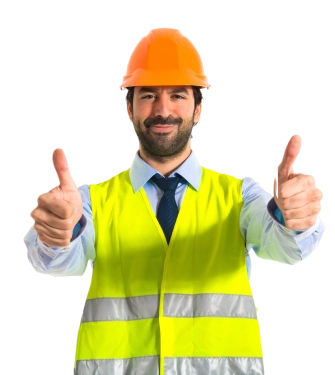Mold Inspector Certification for Prevention, Remediation, and Removal Training
- In accordance with Federal OSHA and EPA Guidelines, and IAC2 Mold Inspection Standards of Practice
- Available in:
 English |
English |  Español
Español - Learn on your own schedule, from any location, on any device
- Adaptable, self-guided course for mobile learners
- Obtain your certificate immediately after finishing
- Engage with audio narration for on-the-go study
- SCORM-ready, on-demand digital, virtual instructor sessions, or on-site course offerings
0.6
Bulk Buying
| Employee | Per Seat |
|---|---|
| 2-10 | $326.69 |
| 11-20 | $313.49 |
| 21-50 | $296.99 |
| 51-100 | $280.49 |
| 101-250 | $263.99 |
Course Facts
Training Duration
Learning Type
Course Access Validity
Device Support
Certificate Validity
The Mold Inspector Certification for Prevention, Remediation, and Removal Training is a comprehensive program designed for professionals seeking the technical expertise and certification needed to perform high-quality mold inspections. This course follows the International Association of Certified Indoor Air Consultants (IAC2) Mold Inspection Standards of Practice, ensuring training aligned with recognized national and industry benchmarks.
Mold inspection is a specialized practice that extends beyond a routine property inspection. Certified mold inspectors are equipped to identify visible and hidden mold growth, assess moisture conditions, and evaluate potential health and structural risks tied to indoor air quality. This California mold inspector training emphasizes scientific understanding and hands-on skills, preparing students to conduct thorough, compliant, and defensible mold assessments.
- Conduct comprehensive mold evaluations using visual and sampling techniques.
- Identify moisture sources, humidity issues, and building-science factors that promote mold growth.
- Apply the IAC2 Standards of Practice for safe and consistent inspection procedures.
- Use professional sampling equipment and interpret laboratory results accurately.
- Recommend remediation and prevention strategies based on best practices recognized by the EPA and OSHA.
Regulatory and Industry Standards
This training integrates the most relevant guidance from the Environmental Protection Agency (EPA), the Occupational Safety and Health Administration (OSHA), and the IAC2 Standards of Practice to ensure inspectors perform their duties safely and effectively. It emphasizes proper documentation, ethical procedures, and adherence to environmental health and safety (EHS) principles.
Learners develop a clear understanding of how to manage mold-related hazards in line with indoor air quality and construction safety guidelines, while protecting both occupants and personnel during inspection and remediation activities.
Who Should Enroll
- Home inspectors and property assessors expanding their service capabilities.
- Environmental health and safety professionals specializing in indoor air quality.
- Building managers, contractors, and remediation experts overseeing property maintenance and restoration.
- Public health and housing professionals involved in environmental compliance and risk assessment.
Whether you are new to the field or advancing your career in environmental safety, this Mold Inspector Certification Training delivers the knowledge, confidence, and credibility to perform effective mold inspections, remediation assessments, and prevention consulting in residential, commercial, and institutional settings.
IAC2 Mold Inspector Certification for Prevention, Remediation, and Removal Training Course Syllabus
This Mold Inspector Certification for Prevention, Remediation, and Removal Training course consists of 8 Modules and 22 lessons. Students are required to take each lesson in sequential order as listed below.
Introduction
Module 1: IAC2 Mold Inspection Standards
This module will focus on how to conduct mold inspections using the set of guidelines known as the IAC2 Mold Inspection Standards of Practice which inspectors are required to follow. We will also thoroughly explore the Standards of Practice. The two categories of mold inspections - "Complete Mold Inspection," and "Limited Mold Inspection" will also be explained.
- Lesson 1: Types of Mold Inspections
- Lesson 2: IAC2 Mold Inspection Standards
Module 2: Understanding Mold and Mold Hazards
This module will focus on explaining what mold is and its existence in both indoor and outdoor environments. We will also discuss the health implications linked to mold exposure, encompassing symptoms, infections, and contaminants. Additionally, we will explore mycotoxins, Organic Dust Toxic Syndrome (ODTS), Hypersensitivity Pneumonitis (HP), and the significance of personal protective equipment (PPE).
- Lesson 3: What is Mold?
- Lesson 4: Negative Health Effects and Mold
Module 3: Exploring Mold Growth
This module will support learners to gain insights into mold growth and understand its requirements. This understanding will assist inspectors in identifying the most probable areas in a building where mold may develop. Building science plays a vital role in recognizing and preventing mold growth within structures. Inspectors must acquire knowledge and understanding of building science principles to effectively address and mitigate fungal growth. We will also focus on the process of discovering mold and determining its common and hidden locations within a building.
- Lesson 5: What Mold Needs to Grow
- Lesson 6: Building Science and Mold
- Lesson 7: Finding Mold in Buildings
Module 4: Mold Inspection Tools and PPE
Inspectors must possess and employ the appropriate equipment and tools during mold inspections to ensure a comprehensive assessment of mold growth. This module will explore the diverse range of tools used in mold inspections. There are various mold sampling devices to collect samples of mold spores or contaminated materials for analysis and identification. The module will also focus on the commonly used mold sampling devices employed by inspectors. The importance for inspectors and personnel involved in mold inspections to wear suitable personal protective equipment (PPE) to minimize the risk of exposure to mold-related hazards will also be explained, including the recommended types of PPE for mold inspections.
- Lesson 8: Mold Inspection Tools
- Lesson 9: Sampling Devices
- Lesson 10: Personal Protective Equipment
Module 5: Mold Sampling Procedures
This module will explain the hypothesis formation process in mold inspections, as well as the four types of hypotheses regarding fungi in indoor environments that can be developed by inspectors and clients. The importance of air sampling in mold inspections, the method involved in collecting air samples from different areas within a building, and the role of air sampling in identifying potential health risks and guiding remediation actions are discussed. The module will also cover the procedures and factors to consider when conducting surface sampling during mold inspections.
- Lesson 11: Hypotheses
- Lesson 12: Air Sampling
- Lesson 13: Surface Sampling
Module 6: Mold Inspection and Reporting
In this module, we will examine the comprehensive framework for organizing, executing, and concluding mold inspections and the steps to be followed. We will explore the contents and structure of a laboratory report, emphasizing its significance in mold inspections. We will outline the essential components that should be included in a lab report and provide guidance on effectively interpreting the results. We will explain the sections that should be included in a mold inspection report and the information that should be covered within these sections.
- Lesson 14: Steps of a Mold Inspection
- Lesson 15: Interpretation of Lab Results
- Lesson 16: Mold Inspection Report
Module 7: Mold Containment, Remediation, and Prevention
In this module, we will provide an in-depth explanation of containment in the context of mold remediation. We will distinguish between full and limited containment, which are commonly employed during mold remediation procedures. Furthermore, we will emphasize the significance of drying items properly to prevent mold growth and outline the different methods used to dry various materials. The essential components of a mold remediation plan will be discussed, together with the typical methods employed for mold remediation and cleanup. We will also explain the specific guidelines for mold remediation in large areas, HVAC systems, and confined spaces. The module will highlight the critical role of remediation clearance inspection as a necessary step in the mold remediation process. Lastly, we will underscore the importance of regularly and consistently implementing building maintenance processes to effectively prevent mold growth.
- Lesson 17: Mold Containment Methods
- Lesson 18: Mold Remediation
- Lesson 19: Mold Remediation Guidelines
- Lesson 20: Remediation Clearance Inspection
- Lesson 21: Preventing Mold Growth
Module 8: Mold Inspection Documents
This module will explore the assortment of essential documents that mold inspectors must possess during a mold inspection. We will emphasize the significance of documentation in the field of mold inspection and underscore the importance of having access to crucial documents for conducting comprehensive and precise inspections.
- Lesson 22: Vital Documents
Final Examination
Frequently Asked Questions
- People planning to become Mold Inspectors
- Property managers: If you manage rental properties, this training can help you prevent and address mold problems.
- Environmental professionals: If you work in the environmental field, this training can help you identify and assess mold problems.
- Real estate agents: If you're selling or buying a home, this training can help you identify and assess any mold problems.
COURSE OBJECTIVES
Course Objectives - Mold Inspector Certification for Prevention, Remediation, and Removal Training
- Understand the concept of mold, its characteristics, and the potential health effects associated with mold exposure;
- Comprehend the IAC2 Mold Inspection Standards of Practice and their guidelines for conducting mold inspections;
- Acquire knowledge of the conditions required for mold growth and how to perform a visual examination of a building to identify mold;
- Learn to utilize the IAC2 Mold Sampling Decision Chart;
- Understand the proper use of tools, equipment, and personal protective equipment (PPE) in mold inspections;
- Develop the skill of hypotheses development and gain knowledge about building science, moisture, and sampling devices and procedures;
- Learn effective documentation techniques for mold inspection work;
- Develop the ability to interpret laboratory results in the context of mold inspections;
- Gain knowledge of mold remediation techniques and best practices;
- Develop report writing skills for documenting mold inspection findings; and
- Understand preventive measures and strategies to prevent mold growth in buildings.
Choose Your Ideal Training Format:



Virtual Instructor-Led
$349.00/Seat (minimum 10 seats)

Client-Site In-Person
$899.00/Seat (minimum 10 seats)
I’m glad I took this mold inspection certification training course. I feel more prepared to take on my new role as a building manager.
The ROI of Online Safety Training
Discover the value of our efficient alternative to live training, and calculate your return on investment.


Recommended Courses


For Corporate Orders and Inquiries please reach out to our sales team at (310) 498-0546
By signing up you agree to receive marketing emails.
Be assured we will never spam you!

 EN |
EN |  ES
ES

























































































































